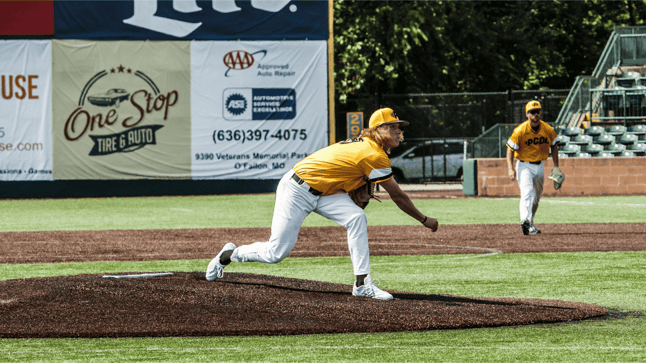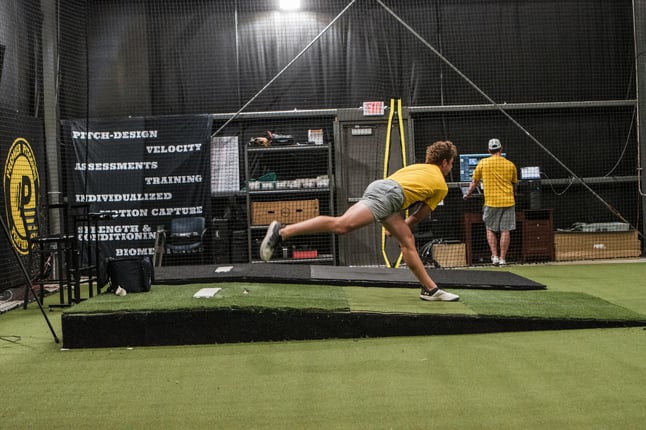No Products in the Cart


Does the effectiveness of weighted implement training outweigh the safety risks? For anyone considering adding it to their pitching training program, your coaches at Premier Performance Pitching (PPP), are breaking down the pros and cons of weighted balls.

Training with weighted balls challenges the muscles involved in pitching, leading to increased strength and shoulder mobility. The variation in ball weight stimulates muscle adaptation, potentially enhancing performance. Weighted training has also been shown to significantly increase passive external range of motion (i.e. layback) compared to control groups, which contributes to ball velocity.
One of the reasons we see increased external rotation with weighted training is because of the changes to the neuromuscular system. Throwing weighted balls can desensitize the proprioceptors that are designed to detect stretching and fire our muscles to protect from overstretching. By desensitizing these receptors with weighted training, it creates a mind-muscle adaptation that can improve shoulder range of motion.
Research has shown that weighted ball training can increase pitching velocity. The increased muscle activation and strength gained from training with weighted balls can translate into improved throwing speed.
Weighted balls provide the opportunity for both overload and underload training. Overload training involves using heavier balls, targeting muscle strength and power. Underload training utilizes lighter balls, emphasizing arm speed and coordination. By incorporating both, pitchers can develop a well-rounded skill set.

Some teams and coaches are concerned about the potential for injury when training with weighted balls. The increased stress on the elbow and shoulder joints can be risky, especially if pitchers are not properly managed or push themselves too far. Several MLB teams have been notoriously cautious about implementing this training method due to these concerns.
In 2017, Dr. Fleisig published a study to understand the biomechanical impact of throwing weighted baseballs with high school and college pitchers. The researchers observed that throwing weighted balls on flat ground using the run-and-gun technique resulted in a notable increase in elbow varus torque, which refers to the stress exerted on the Tommy John ligament. However interestingly enough, this increase in stress was not observed when pitchers threw off a mound. Throughout these studies it becomes clear that a weighted ball pitching program needs the guidance of an experienced and professional pitching coach(es) to produce the targeted results and to minimize the risk of injury.
Every pitcher is unique, and what works for one player may not be suitable for another. The use of weighted balls should be tailored to your physical abilities, mechanics and injury history. This is where the right pitching assessment that utilizes biomechanics and state-of-the-art baseball technologies can be useful. A one-size-fits-all approach may not yield the desired results and could potentially increase the risk of injury.
While it’s tempting to simply invest in weighted balls to improve your pitching effectiveness, they should not be seen as a standalone solution. Even though specific benefits may occur, they should be incorporated into a comprehensive training program that addresses other crucial aspects of your pitch, such as mechanics, flexibility, core strength and technique. Without proper coaching, weighted ball training will not be as effective.
Weighted ball training can provide valuable benefits such as increased strength, neurological adaptation and improved pitching velocity. However, it is essential to approach this training method with caution and awareness of the associated risks.
If you’d like to take an alternative approach to weighted implement training, we recommend using Plyo Balls. While weighted baseballs and Plyo Balls can benefit a thrower's training, Plyos are more often used to target a player's deficiencies through specific drills selected as a result of their assessment information. Take a look at our FREE Plyo Drill Card for more information about how to incorporate Plyo training into your routine.
Our coaches at PPP believe that, when monitored properly, weighted balls can be a valuable piece of a pitcher’s development. For more tips and advice about how to approach weighted training, visit our blog post here for more information.
If you’re a pitcher considering weighted training, we recommend working with an experienced coach that considers your specific body mechanics and training goals. At PPP, we’ll help you analyze your throw to put together a program that incorporates weighted balls in a safe and effective way.
Contact one of our coaches at PPP to learn more about our in-person and remote pitching performance programs.
Premier Pitching is built on...
When discussing pitching performance, the...
“Your arm is your career....
